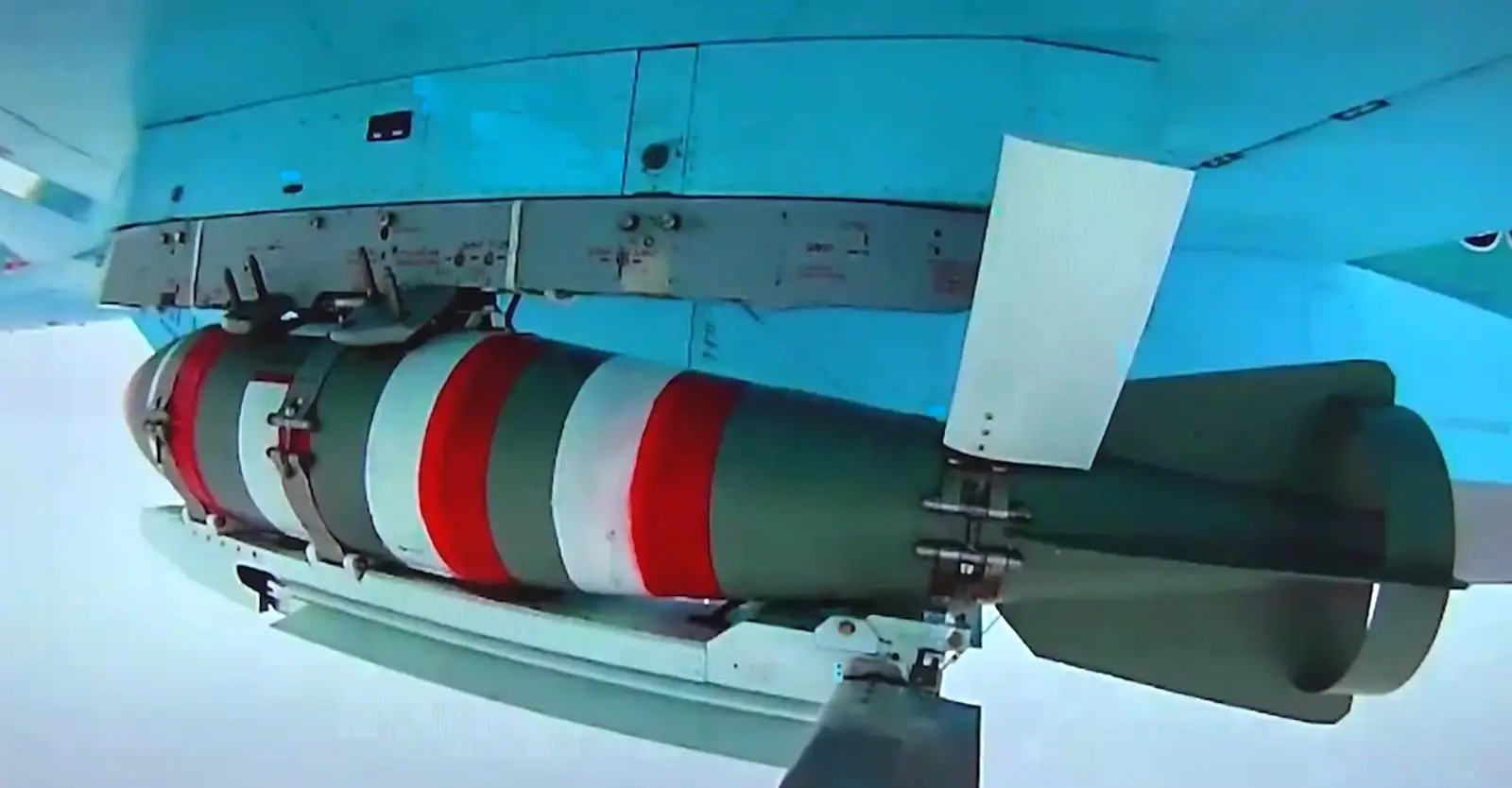Ukraine is set to deploy a counter-drone system designed to thwart attacks by Russian Geran-2 drones as well as UMPK glide bombs, according to reports.
Russia periodically uses as many as 500–600 Geran-2 drones in a single day as part of group strikes against infrastructure that supports Ukraine’s military operations.
While Ukrainian forces are able to shoot down a large number of Russian Geran-2 drones, a significant number still manage to strike their targets.
Also, repeatedly engaging large numbers of drones drains and weakens Ukraine’s air defense resources, increasing vulnerability to strikes by more lethal Russian cruise and ballistic missiles.
Russia’s use of UMPK glide bombs is another serious challenge for which it has yet to develop an effective defense — the bombs’ low radar and thermal signatures, and their very limited flight time, make successful engagement difficult.
Russian UMPK bombs typically have a range of 50–100 km, with newer jet-powered variants reportedly reaching up to 150 km.
The DWS-1 Counter-Drone System
The new Ukrainian counter-drone system, known as DWS-1 (Drone Wall System-1), is designed to create an aerial barrier against incoming threats using a swarm of interceptor drones.
The system employs a technologically advanced architecture but relies on low-cost, expendable interceptor drones.
The use of low-cost drone swarms, it is hoped, will effectively neutralize Russia’s strategy of overwhelming Ukrainian defenses with mass-produced, inexpensive weapons such as the Geran-2 drones and UMPK bombs.
DWS-1 Architecture
DWS-1 is conceived as a “last layer of defense” for protecting critical infrastructure and frontline positions from low-cost aerial attacks.
The system was developed by the French startup Atreyd, which was among three finalists in a NATO competition to develop an effective counter to Russian glide bombs.
Production has been established in France and Ukraine, with plans to expand to the United States.
The system comprises approximately 200 FPV (First-Person View) interceptor drones, each equipped with a small warhead and costing only a few thousand U.S. dollars.
When the DWS-1 radar detects threats, the drones are launched from a dedicated site. Artificial Intelligence then positions the drones to form a “curtain” or “minefield”—they are lined up in the air at varying altitudes spanning several thousand meters.
The system uses AI to analyze the view from each interceptor drone and 3D digital terrain maps to autonomously select targets based on their current tracks. It then steers the interceptors to the intercept point. Additionally, the system incorporates IFF (Identification, Friend or Foe) to prevent fratricide.
The use of machine vision and digital terrain maps facilitates navigation and homing without GPS. The interceptors are designed to be impervious to electronic warfare and can accurately locate their targets in GPS-denied airspace.
Though the system uses FPV drones, it requires only two operators to control the 200 drones. A single operator can effectively manage the view from up to 100 drones using AI. In fact, AI can autonomously control the entire 200-drone system.

Deployment in Ukraine
Ukraine will become the first country to use DWS-1 in combat. One DWS-1 unit was reportedly shipped to the country in early November and is expected to be deployed within weeks. Initially, the system will be used to protect critical infrastructure in the interiors from long-range attacks.
Depending on the system’s success, it may later be moved closer to the front line to defend logistics and support infrastructure against UMPK glide bombs and Geran-2 drones.
Existing Counter Drone Systems
Ukraine has so far used either manually guided FPV drones or specialized autonomously guided high-speed interceptor drones to engage Russian Geran-2 drones.
Typically, interceptor drones carry a small warhead and use sensor-guided ramming to intercept Geran-2 drones mid-air. They cost between $2000 to $3000.
After launch, they are visually cued to their targets or guided by radar tracks. Some use day-and-night cameras to recognize and home in on targets.
Interceptor drones are part of Ukraine’s multilayered air defense architecture, which relies mostly on traditional systems such as anti-aircraft guns, MANPADS, and electronic warfare to handle the high volume of Geran-2 strikes.
Ukraine claims to have downed several thousand Geran-2 drones using interceptor drones.
The drawbacks of the interceptor drones currently in use are their limited geographical coverage and the need for manual launch by a crew.
In contrast, DWS-1 provides much wider geographical coverage and requires far fewer personnel to operate a large number of drones.
If the largely automated DWS-1 proves effective, it will not only limit Russia’s ability to destroy Ukrainian infrastructure but it will also reduce the number of Ukrainian servicemen assigned to counter-drone warfare, freeing them to be deployed to the front.
Ukraine currently produces 600–800 interceptor drones per day, with plans to scale up production to 1,000 drones per day.
Other Western Counter-Drone Systems
The U.S. Army’s Northern Command (NORTHCOM) recently validated and certified a system to counter drone threats to military bases within the United States.
The Army certified a unit of 11 soldiers as capable of defending military sites using NORTHCOM’s Counter-small UAS fly-away kit.
Developed by Anduril, the kit comprises multiple sensors and effectors to detect, target, and disable intrusive small drones. It uses overlapping layers of technology to form a shield that can detect and track drones from all directions.
The system employs Anduril’s Wisp AI-infrared system with 360-degree motion sensors, along with Pulsar, an AI-enhanced electromagnetic warfare platform that can detect and deny electronic threats. Additionally, a mobile sensor trailer uses thermal optics and radar to search for and track incoming targets.
The system also includes a self-guided interceptor drone that can hunt down intrusive drones and ram into them to minimize collateral damage. Alternatively, it can be armed with high explosives.
- Vijainder K Thakur is a retired IAF Jaguar pilot, author, software architect, entrepreneur, and military analyst.
- Follow the author @vkthakur




